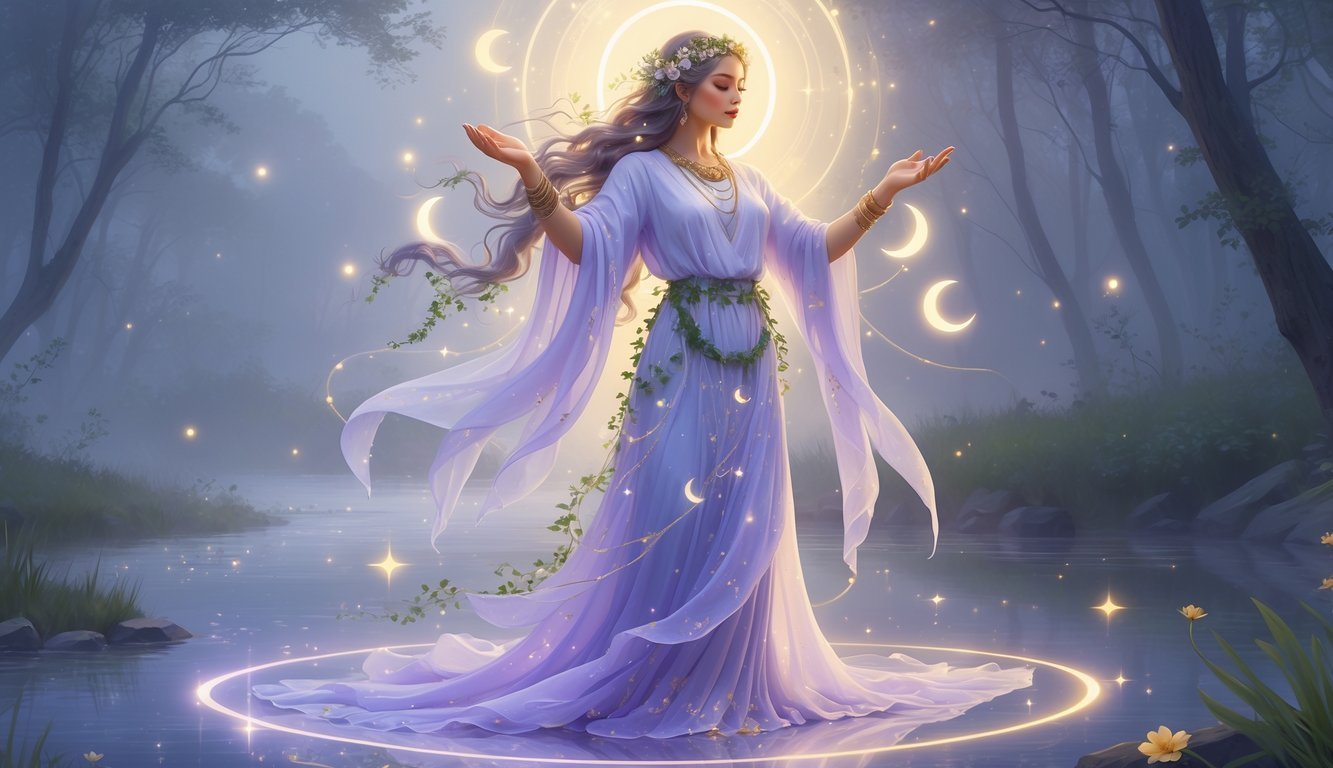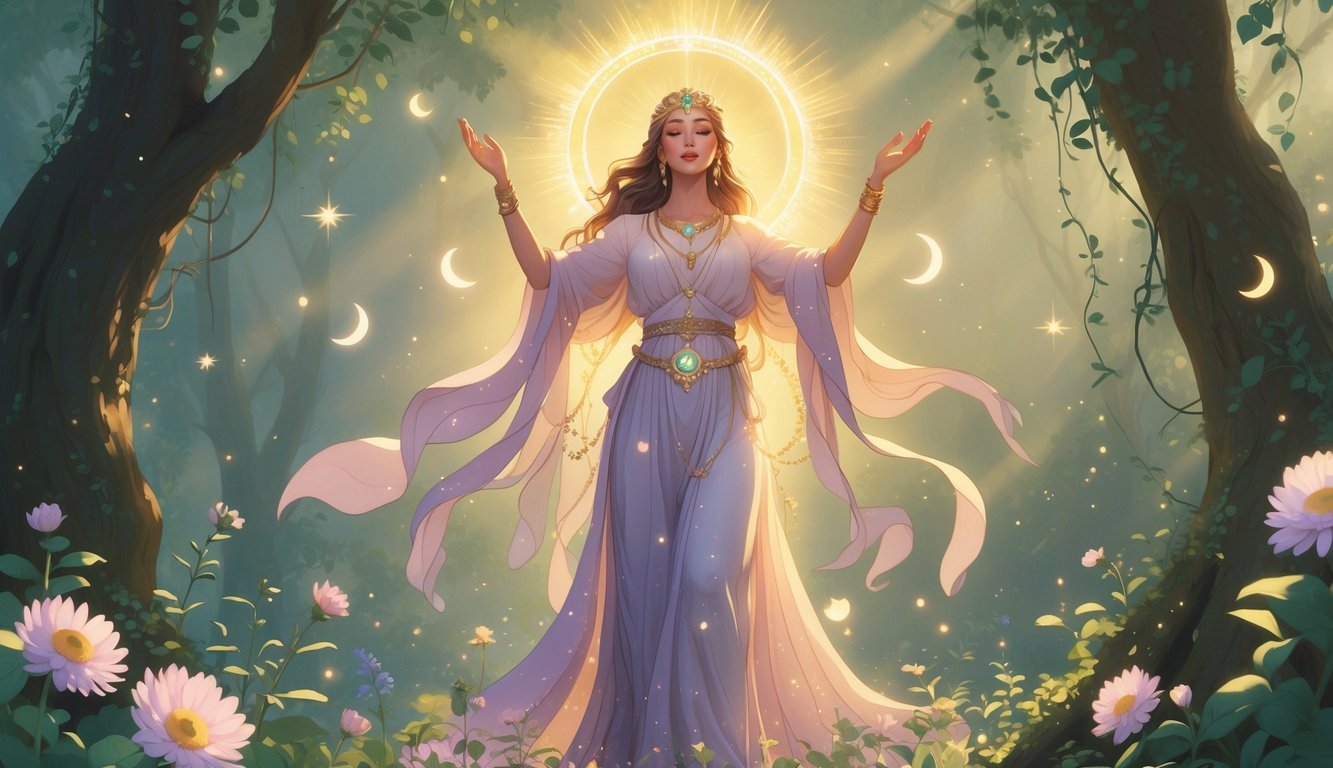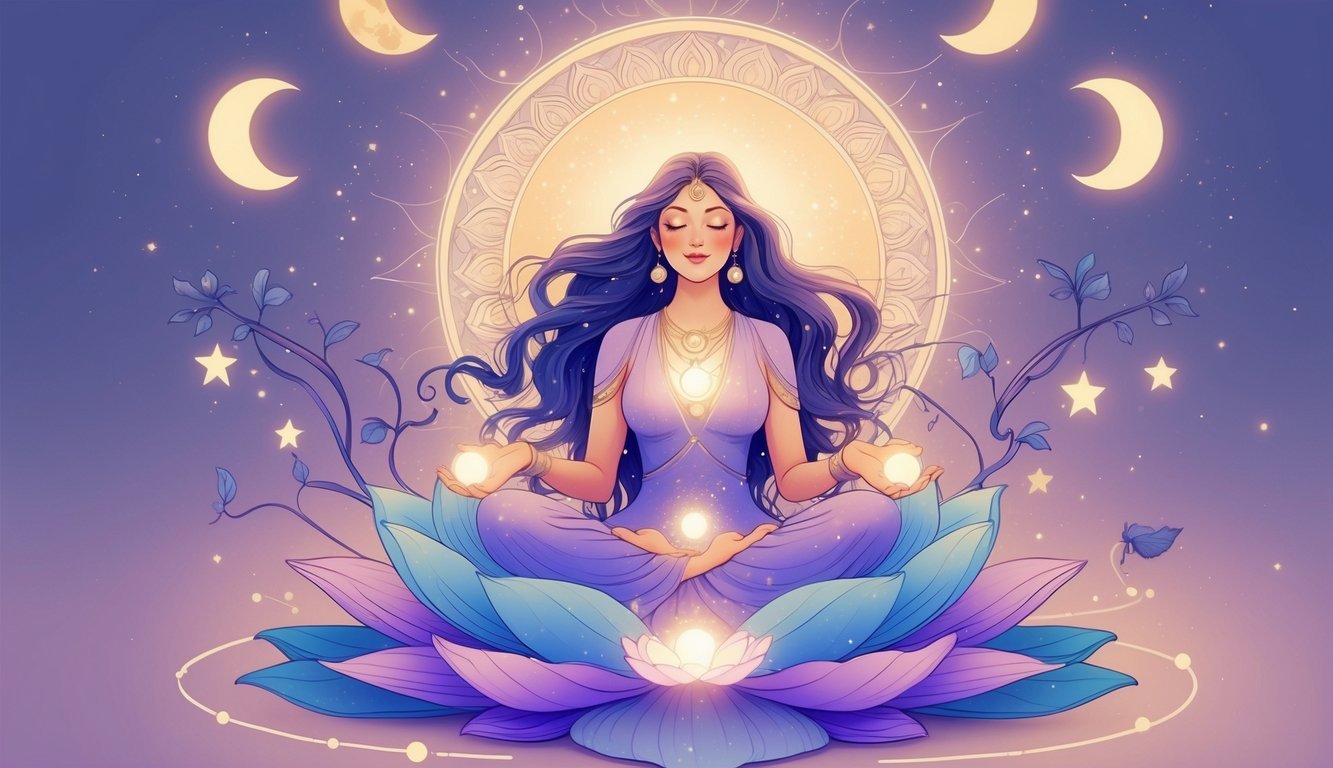PsychNewsDaily Publishers
100 Summit Drive
Burlington, MA, 01803
Telephone: (320) 349-2484
PsychNewsDaily Publishers
100 Summit Drive
Burlington, MA, 01803
Telephone: (320) 349-2484
Goddess spirituality centers on honoring the divine feminine, emphasizing connection to nature, personal empowerment, rituals, and the balance of masculine and feminine energies across cultures.

Goddess spirituality lets you connect with the divine by focusing on feminine power. It’s about honoring the feminine side of life, nature, and the universe, whether you see that as one Great Goddess or a whole pantheon of goddesses.
You get to explore spirituality by celebrating creativity, nurturing energy, and the cycles of life.
People today find meaning in goddess spirituality because it helps them feel connected to nature and their own inner strength. This path usually includes rituals, meditation, and symbols that highlight balance and respect for the Earth.
It’s a way to feel grounded and empowered, all while noticing the sacred feminine energy around you.
As you dive into goddess spirituality, you’ll notice it’s a pretty flexible and personal practice. There’s no strict rulebook—just an invitation to find what fits your spiritual path and life.

Goddess spirituality puts the sacredness of the female divine at the center, tying it to the earth, nature, and the universe. It explores the balance between masculine and feminine forces and looks at how ancient beliefs still shape modern spirituality.
You’ll get to know its history, key beliefs, and some of the most important goddesses from different cultures.
Ancient people worshipped female deities, seeing them as creators, protectors of nature, and symbols of fertility. The idea of a Great Goddess grew from this, representing the source of life and the universe.
Over time, many old religions shifted focus to male gods, and goddesses took a back seat. Even so, goddess worship survived in different pagan and earth-based traditions.
Today, goddess spirituality brings back these old beliefs, putting the divine feminine and its connection to nature front and center.
At its core, goddess spirituality believes the divine feminine is real and powerful. You’re encouraged to experience this through rituals, meditation, or simply by honoring the earth.
Followers connect to the goddess by celebrating the seasons and the life within the earth. This bond helps you feel closer to the universe and your own body.
You might light candles, chant, or read stories about female deities to inspire your own growth.
Goddess spirituality draws from many female deities around the world. Maybe you’ll get curious about Isis from ancient Egypt, who’s known for magic and motherhood.
In Hinduism, Durga stands for strength and protection.
There’s also Gaia, the Earth itself in Greek mythology, and Aphrodite, the goddess of love. Each goddess shines a light on different parts of life and the universe, so you can see the divine feminine in all sorts of ways.
Learning about these goddesses really shows the rich diversity in goddess worship.

Today, goddess spirituality shows up in so many ways, inviting you to connect with nature, creativity, and healing. It often challenges old patriarchal ideas and supports women’s empowerment through rituals and community.
The modern goddess movement grew as people started honoring the feminine divine again, pushing back against male-dominated religions. Thinkers like Mary Daly and Elizabeth Gould Davis led the way, showing how patriarchy limited women’s spiritual roles.
You’ll also see folks studying thealogy, which focuses on feminine divine energy instead of traditional theology. Writers like Marija Gimbutas and Merlin Stone dug into ancient goddess worship and encouraged a return to these empowering roots.
This movement connects with feminism, too. It helps explain why reclaiming the goddess matters for healing and equality.
You can join groups or read works by Riane Eisler and Matilda Joslyn Gage if you want to learn more.
Modern practitioners often create rituals to honor the goddess, either at home or with others. Many gather in sacred circles to share stories, meditate, or celebrate life events like menstruation and childbirth.
Rituals might include lighting candles, using stones or flowers, or chanting and singing. Sometimes priestesses lead ceremonies, blending old traditions with new approaches.
Setting up a sacred space—maybe just a small altar or even a whole room—helps you focus your intention and feel connected to goddess energy. These practices support your spiritual growth and build community with others who share your interests.
Goddess spirituality gives you tools to heal emotional wounds and embrace your own strength. Many find it empowering because it celebrates femininity, creativity, and compassion, offering a balance to patriarchal ideas that often get in the way.
Healing practices might involve meditation, intuitive work, or energy healing, all aimed at reconnecting with your body and spirit. This spiritual path supports women’s rights and can even serve as a form of social activism.
By following this spirituality, you support others, help build inclusive communities, and find strength in compassion. The goddess movement keeps inspiring people to work for equality and a kinder world.

You can bring goddess spirituality into your daily life in lots of simple ways. Learning about its beliefs, symbols, and how it connects with other religions can help you deepen your practice and find your own meaning.
Start by setting up a small space or altar with images or objects that remind you of the goddess. Light a candle, say a prayer, or meditate to connect with her energy.
You might journal your intentions, honor the moon’s cycles, or practice gratitude for qualities like intuition and creativity.
Goddess spirituality honors the divine feminine in many forms. It teaches that the goddess stands for creation, nurturing, and the natural world.
You’ll focus on balancing masculine and feminine energies. The goddess is seen as a source of wisdom, healing, and empowerment.
People often use the moon as a symbol for cycles and intuition. The spiral stands for growth and life’s journey.
The lotus flower means purity and rebirth. You might also see the chalice for nurturing or the goddess figure itself, showing creation.
The Goddess movement usually rejects strict dogmas and focuses on personal spiritual experience. It honors many forms of the divine, not just one god.
This spirituality emphasizes nature, cycles, and equality between genders. It’s less about institutional rules and more about your personal connection.
Goddess spirituality supports feminist ideas by valuing women’s roles and strengths. It challenges traditional religious views that limited women’s power.
This path encourages respect for women’s rights and honors feminine qualities as sacred and equal to masculine ones.
A lot of folks mix goddess spirituality with other faiths. They might see the goddess as part of a bigger divine presence. Sometimes, they link her to Mary or even female saints.
You can keep your original beliefs and still add goddess rituals or symbols. For some, it becomes a personal way to feel more empowered or connected.